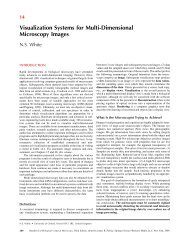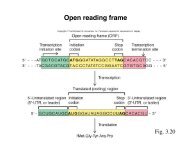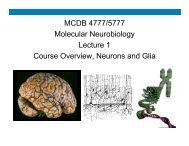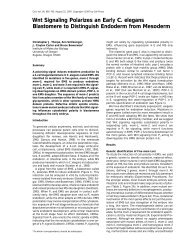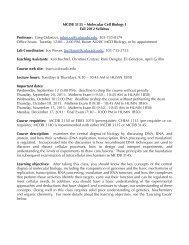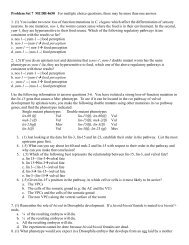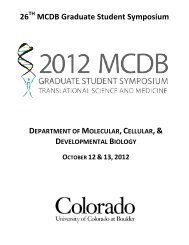Lecture 3: A Brief Overview of Molecular Phylogeny - MCD Biology
Lecture 3: A Brief Overview of Molecular Phylogeny - MCD Biology
Lecture 3: A Brief Overview of Molecular Phylogeny - MCD Biology
Create successful ePaper yourself
Turn your PDF publications into a flip-book with our unique Google optimized e-Paper software.
17<br />
set for each tree calculation. Typical bootstraps use the same number <strong>of</strong> characters as in the alignment,<br />
selecting positions at random, “with replacement”.<br />
Question: If you do a bootstrap analysis where you (the computer) draws sequence positions at random, with<br />
replacement, to equal the number <strong>of</strong> nt in the alignment, what fraction <strong>of</strong> the sequences do you NOT sample?<br />
(A Poisson calculation and a great exam question.)<br />
1. The bootstrap analysis tests anomalies in tree calculations (any particular tree calculation is a<br />
mathematical anecdote) and to some extent whether particular sequence blocks in an alignment cause<br />
weird behavior.<br />
2. E.g. <strong>of</strong> “Bootstrap support” for Big Tree nodes for one tree: Support for<br />
nodes are marked: ML/parsimony; note different results with different methods. that is, a particular node is<br />
observed in ##% <strong>of</strong> bootstrap trees.<br />
(Note that many peripheral nodes have funky bootstrap values because too many “outgroups” included - below<br />
“Troubles”.)





